Gimp How to Make Your Daz3d Art Look Realistic
Post-piece of work in the Daz Studio context only means the work done after rendering. This could be anything from repainting the unabridged movie, to simply adding a signature. Because the term is so nebulous, it sometimes gets attributed magical or nefarious properties. The truth is, there is zilch mystical about the post-work process. While it can contribute to the quality of an image, everything that comes earlier it, including composition, camera-work, and lighting volition be but equally or more significant.
Depending on the artist, some things can be more effectively done in mail, and some in Daz Studio. We go to decide, which techniques all-time help united states transform what we see in our heads onto paper.
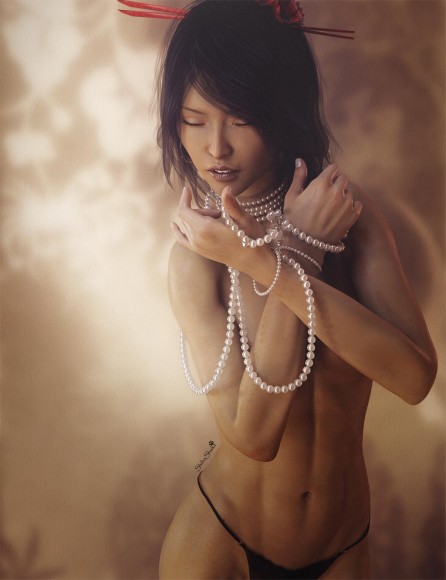
Step-past-Footstep Daz Studio Iray Post-Piece of work Tutorial
My electric current Daz Studio Iray mail service-work process consists of 3 stages:
- Stage 1 – Combine Iray light layers and fix rendering artifacts.
- Phase 2 – Soften, sharpen, glow, color, and dissimilarity.
- Stage 3 – HDR filter. We are currently using Color Efex Pro 4 from the Nik Collection. Available for free here.
All iii stages are performed in Photoshop, only depending on the wait that I am going for, I sometimes skip Stage 3. We will be using the Pearls image higher up in our step past pace post-work tutorial. My recent images can be establish hither.
Phase i – Combine Lights and Gear up Rendering Artifacts
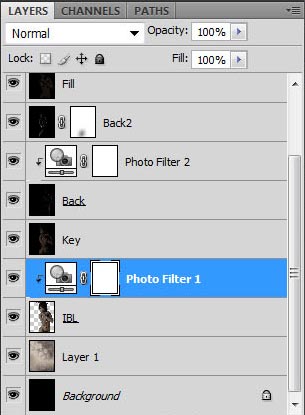
Add in a soft background layer and our 5 Iray rendered light layers.
- Add a soft image to provide an appropriate background. Here, we used one of the photographs from Lady Kassie's Oriental background set.
- We rendered v different light layers in Daz Studio Iray – Key, Fill, 2 Dorsum Lights, and an Surround Map. For the Surround Map, we used the Tropical Ruins HDRi from sIBL Archives. We have Dome turned off, and saved the light layer as a PNG file.
- We add in our low-cal layers using the process described in How I Combine Iray Lights in Photoshop.
- The added gray Photo Filter layer on tiptop of our IBL layer is used to darken our IBL image, so that it fits our groundwork and composition. By changing the gray colour, nosotros can lighten or darken our IBL layer.
- If nosotros zoom in on our electric current image, we volition notice that there are certain rendering artifacts. In particular, the Asian adult female's pilus collides with her thumb-boom. In addition, there is a missing pearl on the strand effectually her paw.
- Nosotros tin set up this in post by using the Clone Stamp tool. In full general, however, we want to minimize the number and extent of fixes we demand to make, as we will get meliorate results by dealing with it in Daz Studio.
- Copy our completed Phase 1 paradigm (shown below) past doing Shift + Ctrl + C (Edit > Copy Merged).
- Create a new file by doing Ctrl + Due north, and then Ctrl + V to paste our Stage 1 epitome into the new file.
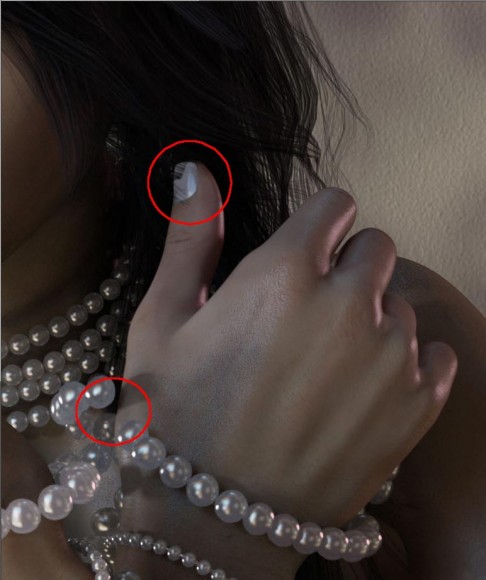
The Asian woman'due south hair collides with her thumb-blast. In improver, there is a missing pearl on the strand around her paw.
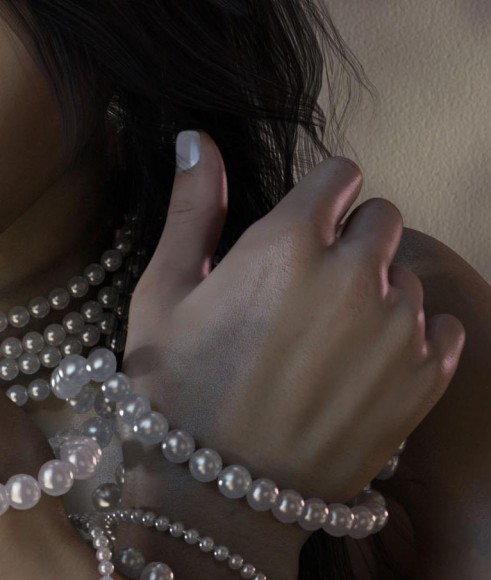
Removed collisions and added in a pearl using the Clone Stamp tool.
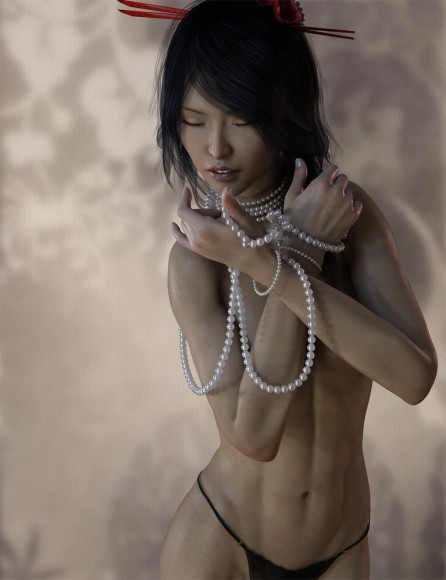
Completed Stage 1 image.
Stage two – Soften, Sharpen, Glow, Colour, and Contrast
- Right-click on our Stage 1 layer and select Merge Downward.
- Add glow to our image past using the process described here.
- Plough off the Tint layer past clicking on the eye icon to the left of the layer.
- Select the Glow3 layer. Do Layer > New Adjustment Layer > Gradient Map.
- Select the Gradient Map layer and pick the Violet,Orange color range in the Adjustments card (see right).
- Prepare the blending fashion of our Slope Map layer to Screen and gear up opacity to xxx%.
Nosotros utilise the gradient map to retone/recolor our image. The Violet,Orange colour range works well in in many cases, especially for realistic images. For fantasy pieces, I may use unlike colors in my gradient map.
- Create a re-create of all our layers past doing Shift + Ctrl + Alt + E (Stamp Visible).
- Select our new layer, name it Soften, and set blending style to Soft Light. Go to Filter > Mistiness > Gaussian Mistiness. Prepare the radius according to the amount of softening that y'all want.
- Open our volumetric lite file and paste it after our Soften layer.
- Select the Soften layer and exercise Layer > New Adjustment Layer > Levels. This Levels layer will help to increase contrast in our image, and then that it doesn't look so flat. Nosotros set the middle value in the Levels adjustments settings to 0.75 (see right).
- At this point, our image looks rather dark and a bit blurry. Therefore, we want to lighten our image and bring back some detail.
- Open our Environment Map (Tropical Ruins) image. Right-click on the Environment Map layer and pick Duplicate Layer (see correct). In the pop-up card, under Destination > Document, select our electric current working image (see beneath).
This will indistinguishable our Environment Map layer into our working document. Nosotros name the layer Lighten.
- Set the blending mode of the Lighten layer to Screen. This will add the Environment Map lite into our image. Adjust opacity to the level that we want. In this case I set up it to sixty%.
- Duplicate our new Surround Map layer (this time into the same document, which is the default). Name this new layer Sharpen.
- Set the blending mode of this new layer to Soft Light and opacity to 100%. Go to Filter > Other > High Pass. Set the radius to v.0 pixels.
This creates a sharpening layer from our Environment Map to bring dorsum some of our image details. We tin can further increase sharpening by setting the layer blend manner to Overlay. As usual, nosotros can employ the opacity dial to make more minor adjustments.
- Turn the visibility of the Tint layer back on by clicking on the check-box to the left. This will give a warm tint to our paradigm. Nosotros can control how warm our image is by changing the opacity of this layer.
- Select the Tint layer and do Layer > New > Layer. This creates a new layer on acme of our tint layer.
- Select our new layer and name it Vignette. Ctrl-A to select the unabridged layer and do Edit > Fill. In the pop-up menu select Black equally our fill colour and make certain that opacity is fix to 100%.
- Set the blend mode of our Vignette layer to Multiply and opacity to 30%.
- Do Layer > Layer Mask > Reveal All. Click on our mask layer to select it.
- Select the Marquee tool on the left Photoshop toolbar. Correct-click on information technology, and select Elliptical Marquee Tool (see right). Draw an elliptical marquee around the area of our image that nosotros desire to emphasize (e.k. her face and pearls). We tin can also exercise Edit > Costless Transform to rotate and scale our elliptical marquee to get it to the correct position, size, and orientation.
- One time nosotros accept it in the position that we desire, do Edit > Fill > Black. This will create a light area around the part of the image we desire to highlight.
- Click somewhere else on the screen to deselect our marquee. Practice Filter > Blur > Gaussian Blur to soften out the edges of our circumvolve.
- Indistinguishable our Vignette layer and gear up alloy manner to Soft Low-cal. This finishes our Stage 2 process.
- Equally before, Copy our completed Stage 2 paradigm (shown beneath) by doing Shift + Ctrl + C (Edit > Copy Merged).
- Create a new file past doing Ctrl + N, and so Ctrl + 5 to paste our Stage ii image into the new file.

After running the Shiba Glow activity on our Stage 1 paradigm.
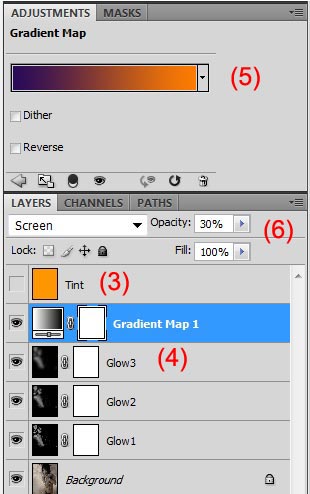
Re-tone or recolor our image by using a Gradient Map adjustment layer, set to Violet, Orangish colour range.
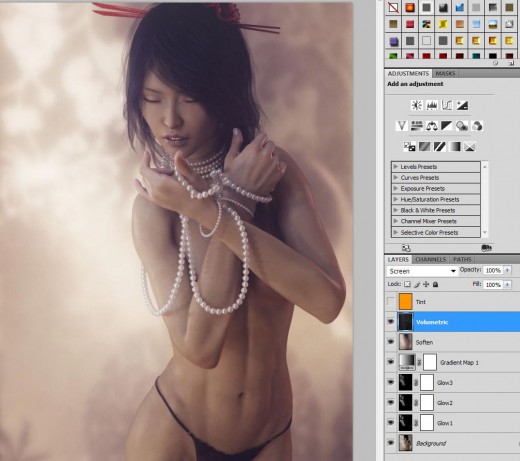
Adding ii softening operations – Gaussian Mistiness layer and our Volumetric light.
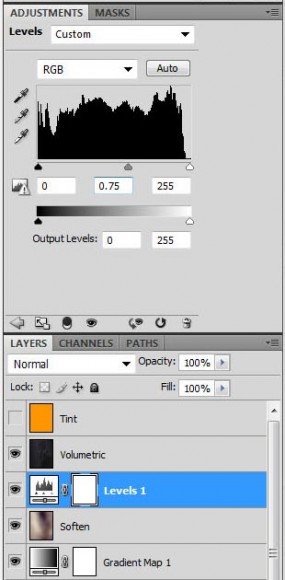
Select the Levels layer and set the middle value to 0.75 in the Adjustments menu.
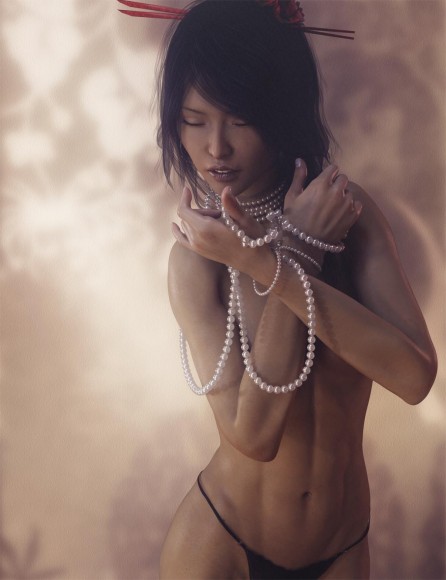
After our softening furnishings, the image looks rather dark and a fleck blurry.
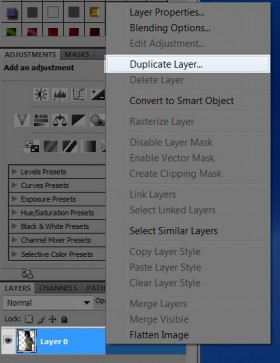
Right-click on the Environment Map layer and pick Indistinguishable Layer.
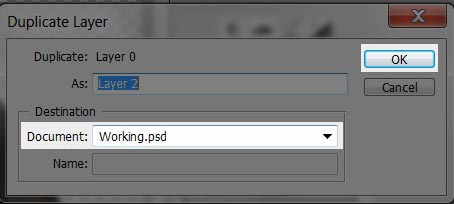
In Destination > Document, select our current working image file.
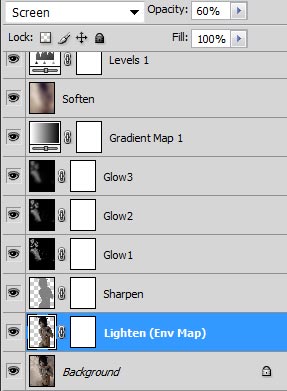
This is what our Photoshop layer stack looks similar after adding the lighten and acuminate layers.
After calculation our lighten and and sharpen layers, our image is now brighter and has more item.
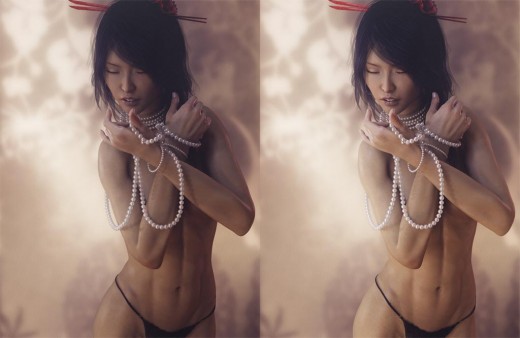
Left – Before; Correct – After adding the lighten and sharpen layers.

Add warm tint and a Vignette layer.
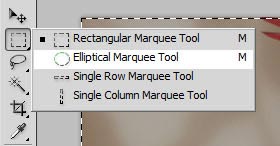
How to select the Elliptical Marquee Tool.
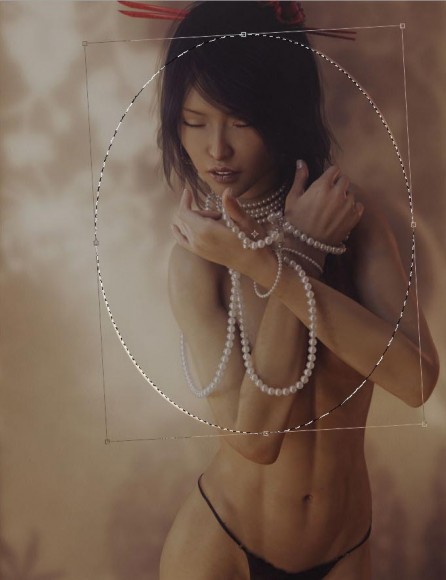
Depict an elliptical marquee in the area we want to emphasize. Edit > Free Transform to rotate, scale, and move, our choice.
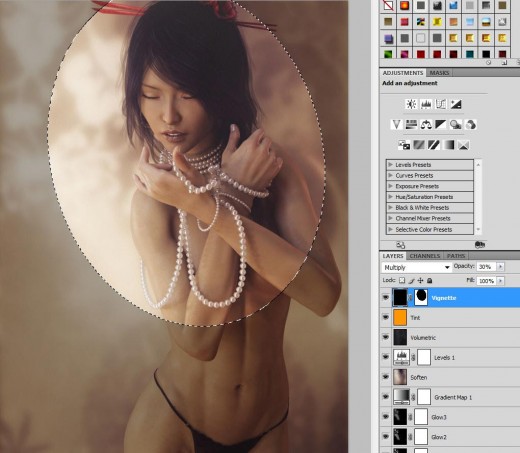
Create a light area around the part of the prototype nosotros want to highlight by using our Vignette layer.
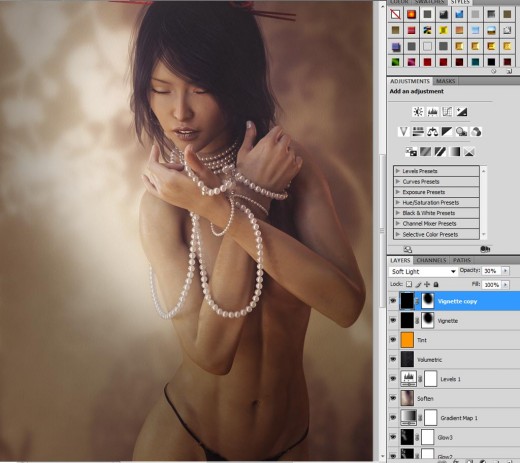
Our paradigm and layer stack after finishing the Stage ii procedure.
Phase three – HDR Filter
- Right-click on our Stage 2 layer and select Merge Down.
- Click on Color Efex Pro 4 from the Nik Collection (Download for complimentary hither).
- Select Particular Extractor in the Colour Efex Pro 4 interface. In this example, I use the default settings (see beneath) and hit ok.
- This adds a new Detail Extractor layer to our prototype file. Nosotros can then set the opacity of that layer to control the level of item added. In this case, I set the opacity to 30%.
- In addition, we may only want to add detail on certain parts of the image. To practise this, select our Particular Extractor layer and do Layer > Layer Mask > Hide All. So, paint in the areas where we want more item.
- Also note that the Detail Extractor operation will lighten our image. To re-rest the layer so that it improve matches the original Stage two prototype, we add a Levels adjustment layer (Layer > New Adjustment Layer > Levels). Make sure to cheque Use Previous Layer to Create Clipping Mask, then that the Levels adjustment only applies to our Item Extractor layer.
- Set the eye number in the Levels adjustments menu to 0.9. This finishes our Stage iii procedure.
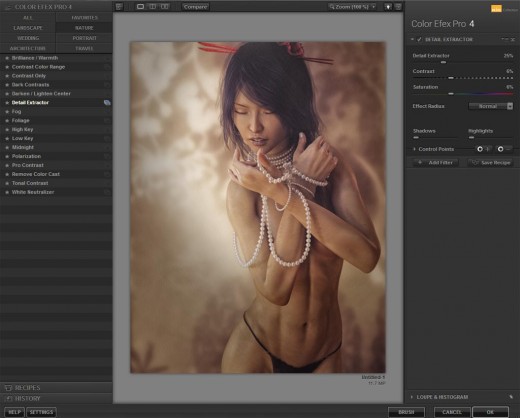
Use the Detail Extractor in Color Efex 4 from the Nik Drove to bring out more image details.
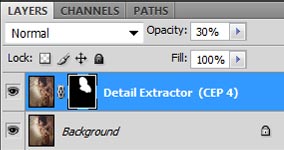
Our Detail Extractor layer with a mask for the areas nosotros want to emphasize (e.k. face).
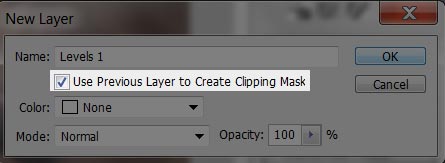
Brand certain to check Utilise Previous Layer to Create Clipping Mask.
I do not always utilize the HDR filter. For this composition, I actually prefer the softer image, so I posted the finished Stage 2 image in my Daz Gallery. In fact, this applies to all of the methods outlined above; we just utilise them if they help to enhance our paradigm. Experiment with opacity and adjustment settings to become the results that you want.
Hope y'all enjoyed this step-by-step post-work tutorial.

Asian adult female holding pearls final image (with HDR filter).
Source: https://thinkdrawart.com/step-by-step-daz-studio-post-work-tutorial
Postar um comentário for "Gimp How to Make Your Daz3d Art Look Realistic"